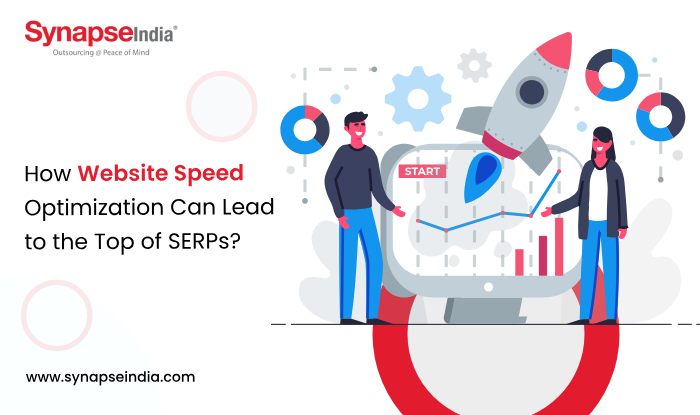 20 Apr 2024
20 Apr 2024
Every business wants to scale up on website ranking and rank in the top spots on Google SERPs. To appear on top means your website brings a lot of traffic to Google SERPs. More than that, this brings a lot of credibility to most of the people’s vision. A study conducted by Webwords shows that 91.5 percent of search engines don’t go past the first page after performing a query. The top 3 spots receive more than 50 percent of clicks, and this is when you want your website to be known to search for your service online. This blog will discuss how website speed optimization can lead your business to be on top of SERPs.

Without a good search ranking it’s not possible to get good traffic. Being a website with high traffic meets all the expected conversions, visibility, and authority. Top-ranking websites get traffic from potential search engines and generate more leads and sales. Search engines are the first point of contact when people are looking for something that business is missing. Website occupies top spots on the search for certain keywords which are considered to be content authorities in the industry. Google's mission is to provide users value information on different topics this enables website owners to work with a search engine optimization specialist to create value content worthy of the top spots on SERPs.
Track user engagement, traffic, and bounce rate on your website by using solutions like Google Analytics or comparable platforms. Keep an eye out for any notable dips or irregularities that might point to problems.
To find any usability problems or pain spots on the website, conduct usability testing with actual users. Get input on the user experience as a whole, content clarity, navigation, and layout.
To find technical SEO problems like broken links, duplicate content, page speed issues, and crawlability concerns, use SEO auditing tools like SEMrush, Moz, or Screaming Frog.
Examine the website's layout and design for consistency, responsiveness, and cross-browser compatibility. Keep an eye out for any design choices that could make using the website more difficult or less visually appealing.
Evaluate the content of the website to make sure it is accurate, relevant, and in line with the expectations and needs of the intended audience. Look for grammatical mistakes, inconsistent messaging, and out-of-date material.
You can ensure your website performs at its best and is effective overall by following these solutions and watching for any problems.

Sort issues into priority lists according to how they affect website performance and user experience. Prioritize less urgent issues after pressing ones that impact usability, SEO, or conversion rates.
Increase the speed of your website by using content delivery networks (CDNs), enabling browser caching, optimizing pictures, and minifying CSS and JavaScript scripts. Take care of server-side problems like sluggish hosting or slow server response times.
Use tools such as Screaming Frog or Broken Link Checker to check your website for broken links. Maintaining a seamless user experience and maintaining SEO authority requires replacing or updating broken links and setting up appropriate redirects for any removed or obsolete pages.
Make sure your website is responsive and optimized for a range of screen sizes and devices. Use Google's Mobile-Friendly Test to check the responsiveness of your website and make the required changes to enhance the mobile user experience.
For SEO purposes, go over and improve headings, meta descriptions, page names, and other on-page content. Make sure every page contains distinct, informative metadata with pertinent keywords that appropriately describe the content of the page.
You may maximize the efficacy of your website in accomplishing your business objectives, improving user experience, and optimizing performance by methodically addressing possible problems and putting remedies in place.
A website's visibility and position on search engine results pages (SERPs) are largely dependent on its website speed optimization. Website owners can improve user experience, lower bounce rates, and boost engagement by giving priority to speed improvements, which will eventually result in higher search engine results. Speed optimization gives websites a competitive edge in SERPs, increasing their online presence and bringing in more organic visitors. Businesses may increase overall online success and search engine rankings by investing in website speed optimization.

 22 Jun 2016
22 Jun 2016
